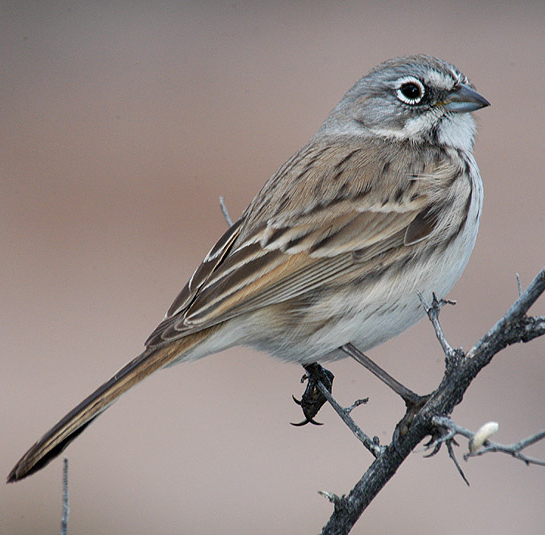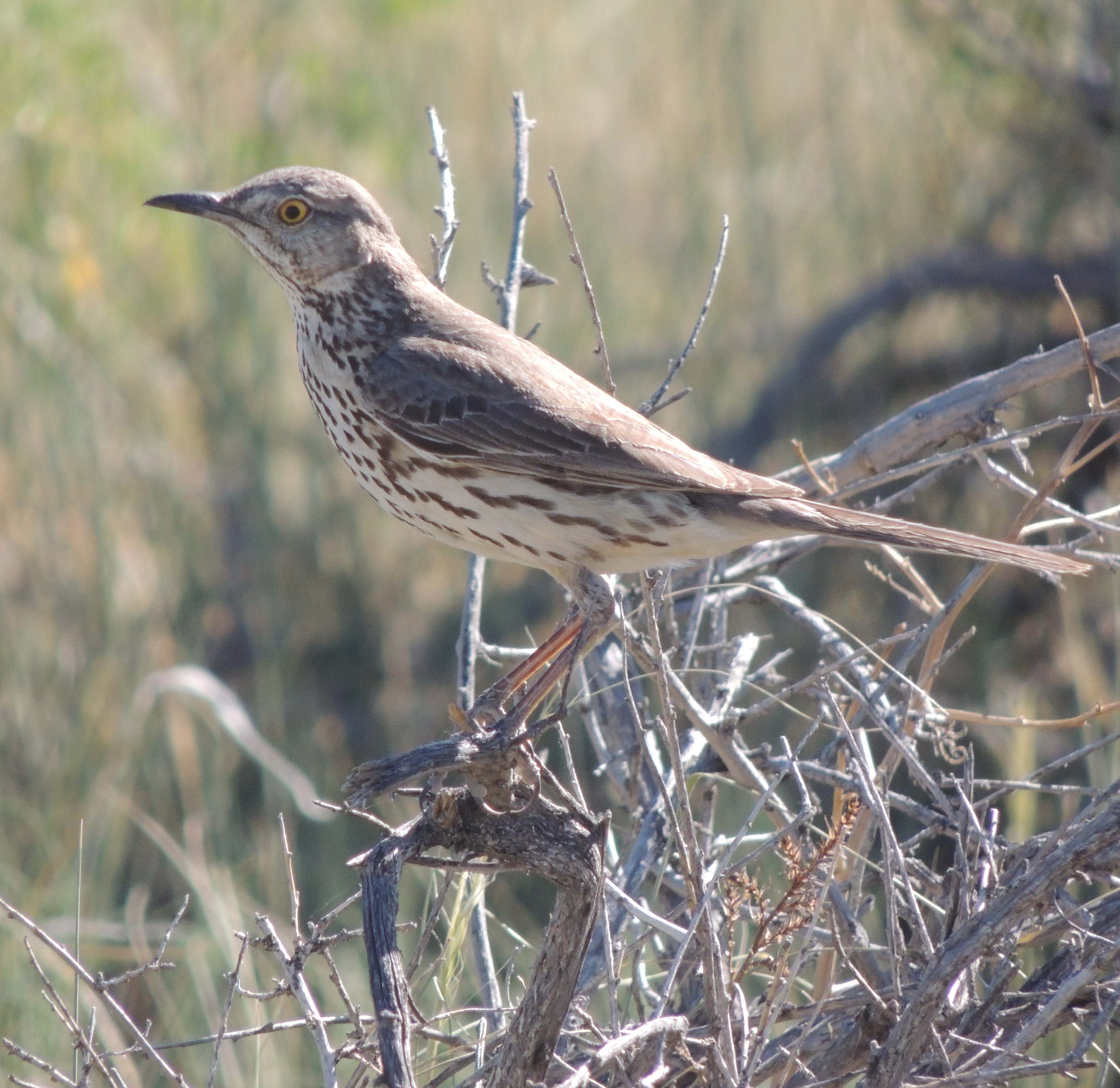
Sage Sparrow by Bill Schmoker
This winter, Rocky Mountain Bird Observatory presented a new tool for identifying the conservation needs for sagebrush songbirds in the context of working lands. Called the Decision Support Tool, its purpose is to compare management options for economic viability of grazing lands with what sage-dependent songbirds and grouse need for healthy habitat. RMBO gathered feedback from over 150 participants at four different forums in Colorado, Montana and Wyoming, as to how the tool prototype can be made more functional for managers across varied landscapes.
“So much money and attention is being focused on Greater Sage-Grouse conservation, and we wanted to increase awareness that sage grouse habitat degradation or enhancement also impacts other birds – many of which are of conservation concern,” said Laura Quattrini, Stewardship Program Manager. “We are encouraging people to take a proactive approach to how their management actions might impact other species.”

Sage Thrasher by Bill Schmoker
In short, this tool helps predict and realize the impact of management decisions. The sage birds being taken into consideration are Brewer’s Sparrow, Sagebrush Sparrow and Sage Thrasher. A distribution map of these birds’ populations is overlaid with Greater Sage-Grouse core areas. This data comes from the Integrated Monitoring in Bird Conservation Regions (IMBCR) program (a collaborative of partners working on scientifically rigorous bird monitoring efforts across public and private lands), which includes about 1,000 transects and 12,000 point counts annually across 13 states. This is then overlaid on ecological site descriptions that show what happens to birds with habitat changes due to management. The management options considered in this model include prescribed grazing (rest rotation and deferred rotation grazing), sagebrush and conifer management, and a combination of rest rotation and brush management. The tool will demonstrate trends in bird and habitat response under the different management options before they are implemented to help better inform decision-making.
Brewer’s Sparrow populations, for example, plateau at certain vegetation levels and types. For this sparrow, a lower shrub height equals a lower population, but once it grows too tall its numbers start to drop off again. These birds don’t like their habitat too tall or too short. Therefore, the best management practices for the vegetation type in Brewer’s Sparrow habitat can be determined for an individual ecological region.

Brewer’s Sparrow by Bill Schmoker
“A land manager will be able to plug in the existing state of a site and what they’re trying to achieve there,” Quattrini said. “The tool will then calculate the best management options to get the land to provide what they need for grazing, as well as the needs for sage-obligate bird species.”
During the forums, RMBO presented the tool to Bureau of Land Management and Natural Resources Conservation Service participants, as well as individuals from the U.S. Forest Service, conservation districts, non-profits, state wildlife agencies and a handful of landowners. RMBO collected feedback about what would make this tool most beneficial and functional in the landscapes these partners work in. RMBO is integrating the suggestions into the tool, which is slated for completion by next winter. At that time, RMBO will hold a webinar to present its use to all interested parties.
Editor’s Note: This article was originally published by Intermountain West Joint Venture.


